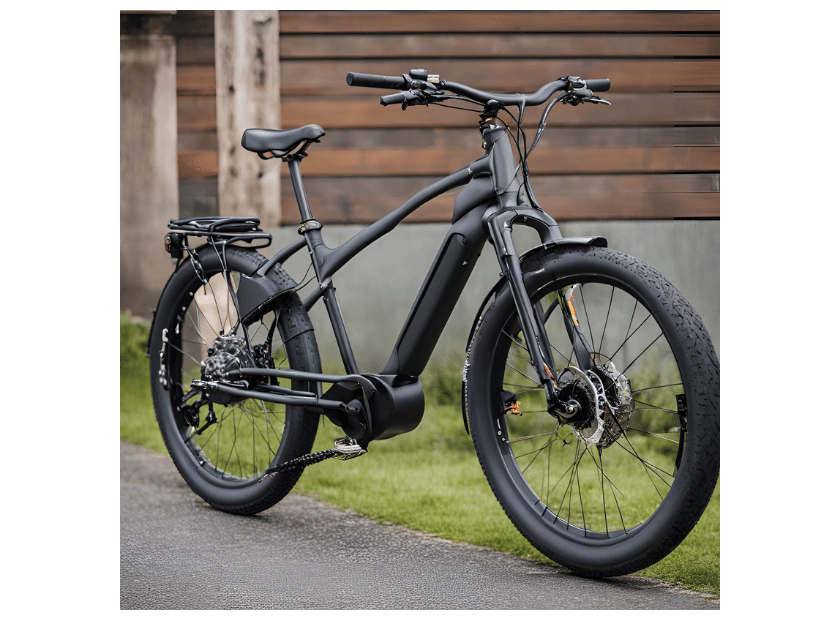How to Electrify Your Ride: The Ultimate Guide to Choosing an Electric Bike Conversion Kit in 2024
Evaluate Your Requirements
Before we get into the details of electric bike conversion kits, let’s take a step back and consider what you need from one. Here are some things to think about:
Terrain and Commute Distance
City commuting: If your bike will mostly be used for flat, short rides in the city, then a basic kit that has a small battery range should do.
Hilly or off-road terrain: People who often come across hilly areas or rough paths need stronger motors with larger batteries capable of dealing with higher power requirements.
Speed and Performance Goals
Speed: Decide how fast you want your e-bike to go. Kits come with different motors that have varying levels of power which can help you achieve higher speeds especially if you travel long distances.
Battery life span: Think about how much distance you plan on covering per charge. Remember that bigger batteries offer greater ranges but also increase the weight of your bicycle.
Budgetary Limitations
Initial Price: Conversion kits have very broad price ranges starting at affordable options and going up all the way to advanced models that are more expensive. Therefore, set a budget before embarking on this journey so that it helps guide your search process.
Future savings potential: Although it may seem like they cost quite a bit upfront initially, converting an old bike into an electric one tends to be cheaper over time than buying another brand new ebike altogether.
By taking into account these points, one is armed with enough information needed when choosing the right conversion kit for them thus making their switch onto electricity hassle free and smooth sailing too.
Why Convert Your Bike to an E-Bike?
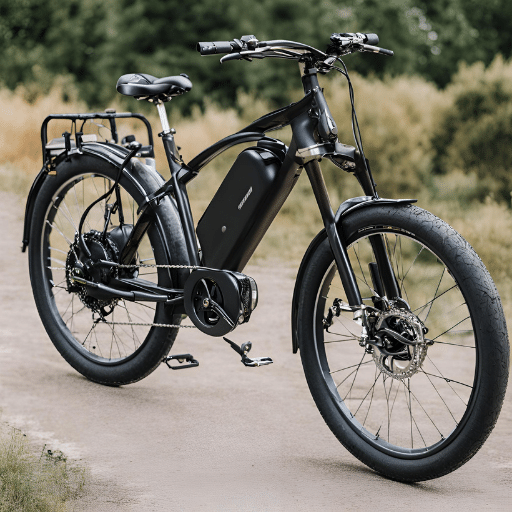
Advantages of converting a bike into an e-bike instead of buying new
There are several notable benefits to converting a bike you already own into an electric bike as opposed to purchasing one. The first is that it is usually cheaper; conversion kits generally cost less than fully-assembled e-bikes, so this option is more affordable for many people. Another advantage is that if you convert your bicycle, then it allows you to keep using something familiar and comfortable, which can greatly improve the overall riding experience. Also, when choosing components such as motor power, battery capacity control features, etc., conversion kits offer customization options unlike any other method so far discovered – making this way more personalized and effective! Furthermore, upgrading your current model rather than simply scrapping it in favor of another machine altogether not only saves money but also helps conserve resources since there will be no need for extra production materials or manpower, thereby saving the environment, too (Hornby 2016). In summary, these benefits should make anyone want to electrify their ride by converting bikes into e-bikes.
How can changing the type of bicycle save me some cash?
The process where one changes the type of bicycle they use with another could end up being very beneficial, fiscally speaking. This means that financial savings would be made if we were to convert our normal cycles into electric-powered ones. The initial capital outlay involved in purchasing a kit for transforming these machines is always much less compared to what one would spend on buying completely new motorcycles. On top of that, maintaining them becomes inexpensive since most parts remain similar and are cheaply replaceable. Other than this general reduction in costs, specific savings are realized through commuting expenses, which are lowered when fuel consumption drops drastically due to increased efficiency during pedaling or battery usage while traveling, therefore reducing reliance on public transportation services. In addition, reduced operational charges per day further contribute significantly towards cumulative personal gains derived from cutting down regular repairs coupled with frequent replacements, which can drain one's pocket eventually. Finally, conversion kits have higher ROI, especially for individuals who ride their bicycles frequently when running errands or going to work, because they enable one to save more on transport fare, among other things, hence becoming cost-effective over time, thus making sense even financially.
What are the environmental benefits of recycling a bicycle using an electric conversion kit?
Recycling a bicycle by means of attaching it to an electric conversion kit has various environmental advantages. Primarily, this method helps in waste reduction as there is no need to produce a whole new e-bike from scratch; rather, it reuses materials and components that already exist. When fewer items are manufactured, then fewer raw materials will be used together with energy resources, thereby leading to decreased carbon emissions into the atmosphere. On top of that, compared to cars or motorcycles, these machines generally do not emit any harmful substances during operation; hence, they have smaller ecological footprints. Furthermore, such devices work without burning petrol, therefore saving fossil fuel reserves and minimizing greenhouse gas production. Lastly, employing modified e-bikes for everyday rides within cities can alleviate traffic jams while also fostering cleaner air quality plus sustainable urban mobility. Ultimately, turning your bike into an electric one through utilizing conversion kits is a green living practice that greatly contributes towards the realization of nature conservation goals (Hornby 2016).
Different Kinds of E-Bike Conversion Kits
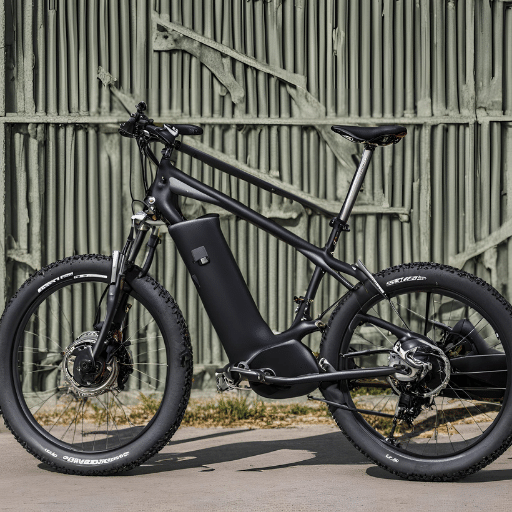
Hub Motor Kits vs. Mid-Drive Conversion Kits
While comparing mid-drive conversion kits with hub motor ones, there are a number of key differences and advantages that become evident. Hub motor kits are usually easier to install as well as more affordable thereby making them the most popular choice among beginners. They are mounted in the wheel hub, providing direct assistance to either the front or rear wheel. This system is simple and reliable but may result in uneven weight distribution and inefficient power transfer, particularly on steep hills or rough terrains.
Conversely, mid-drive conversion kits are installed at the crankset level, where they supply power directly onto the chain drive mechanism, thus propelling the bicycle forward. Generally, this configuration offers better overall bike balance and utilization of power since the motor takes advantage of existing gears on bikes. Therefore, mid drives are well suited for tough terrains and hilly commutes. Nevertheless, mid-drives entail higher complexity both during the installation process and maintenance, not forgetting their relatively expensive cost.
To put it briefly; hub motors represent cost friendly alternatives which can be easily fitted by anyone even in places having less sloping grounds while middrive systems guarantee top efficiency levels especially when used on different landscapes although this comes along with increased complexity during set up and operation besides being costly too much.
Differentiating between front and rear wheel conversion kits
Front and rear wheel conversion kits have different features that can suit various cycling needs as well as preferences.
Conversion Kits for the Front Wheel: They are easier to mount because they only require changing your ordinary bicycle’s front wheel with an electric one, making them more convenient for DIY lovers. This setup gives a symmetric traction advantage where the motor at the front pulls forward on both sides of the drive train equally. However, this may lead to instability sometimes and a tendency to slip by the front tire, especially when riding on surfaces that are loose or wet.
Rear-wheel Conversion Kits: These types of systems install by replacing your bike’s rear wheel entirely thus offering better grip during uphill rides or rough terrains while maintaining natural ride feeling. Distributing weight towards the rear end improves stability and handling, making it stronger over uneven grounds, thus becoming smoother in performance for heavy-duty applications. Nevertheless, installing such systems may prove more difficult than anticipated, requiring careful adjustment and maintenance of the bicycle gearing system, among other things.
To sum up, front-wheel conversions are user-friendly due to simplicity in design but also they provide better balanced traction on flat land; whereas rear-wheel conversions offer greater stability plus enhanced traction suitable even under challenging conditions.
Why the kind of bike you have is important for a conversion kit?
The sort of bicycle one owns greatly impacts how well a conversion kit works with it. For instance, road bikes are designed to be ridden on smooth surfaces and have lightweight frames as well as narrow tires, which makes them most compatible with front wheel drive conversion kits. Conversely, mountain bicycles built for riding down steep trails or tackling rough terrains are better off using rear-wheel-drive conversions that improve stability when going off-road at low speeds where traction is key. Hybrid bicycles can take advantage of either depending on what will be used more often by riders who need versatility across different types of terrain since hybrids are built for mixed use environments such as city streets combined with dirt paths through parks etcetera while still being able to handle light trails too if necessary without sacrificing too much efficiency elsewhere like speed on pavement sections so there’s no best answer here; it depends upon each person’s needs – some may prefer one over another due to personal preferences but all should perform equally well once properly installed according to their intended specifications — frame type, wheel size, brake system type (disc brakes), existing gear setup etc., where applicable should be taken into consideration during installation process because these factors affect difficulty level involved in fitting parts together correctly thereby affecting overall efficiency realized after successful completion hence people must consider various aspects about their own bicycles before starting any such project keeping safety always first priority especially when dealing with converting electric bikes from non-powered ones thereby ensuring that they function optimally both performance wise and safety wise.
What should you think about when buying the best E-Bike Conversion Kit?
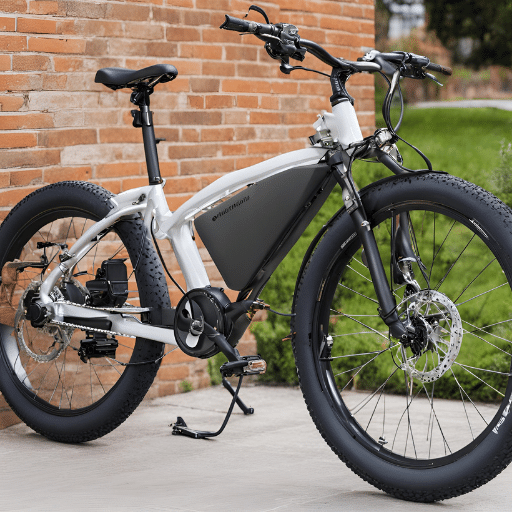
Motor power and why it is important for your converted e-bike
Motor power plays a critical role in determining how well your converted e-bike will perform. Motor power measured in watts affects the speed of the bike, its ability to climb hills, and how long it can maintain higher speeds. More powerful motors have higher acceleration rates and top speeds (for instance; 500W+), which is advantageous for those who want to commute fast or conquer steep slopes. However, strong engines consume more battery life, thus reducing the overall range of an e-bike.
Normally a motor power ranging from 250W-500W should be enough for urban commuters as it balances between performance and energy saving. Off-road riders or people living in hilly areas might need motors with wattages between 750W-1000W so as to get enough power when riding on tough terrains. Moreover, one should also take into account local regulations since some places restrict e-bikes’ motor powers beyond certain limits that are meant for road safety reasons only. In summary, therefore, ensure that you choose the right motor output depending on where you will be riding frequently and what kind of experience you want from your electric bike.
Battery life and voltage: Finding the best match for your commute
When choosing a battery pack during an electric bicycle conversion kit purchase process, understanding battery life and voltage becomes vital if they are going to meet all your commuting requirements adequately. Battery life indicates how much energy storage capacity there is inside a given battery system at any given time (measured in watt-hours). The higher this number goes up, then obviously so does range extension, i.e., one can cover more miles before recharging their cells again. For example, according to various tests carried out under different conditions such as rider’s weight, average speed maintained by the rider as well as terrain type covered during each test period, it was found that on average, a 500Wh battery could offer anything between 20 to 50 miles range. This only shows that batteries with watt-hours ranging from 400Wh to 600Wh are commonly used in most commuter bikes since they have a good balance between size, weight, and ride duration.
Voltage (which usually varies from 24V – to 48V) affects the efficiency as well as power output capability of any electric bike motor; thus, it should not be ignored too when making a selection among different types of these devices. Higher voltage levels, such as those rated at either 36v or even 48 Volts DC, tend to provide more power, which enables one to achieve better performance, especially during acceleration or climbing hills sections. Nonetheless, higher voltage systems may need stronger motors and controllers, thereby increasing overall weight and the cost involved in purchasing such an e-bike conversion kit.
Therefore, before settling for a particular kind of battery, one needs to consider factors like average distance covered per trip, charging station availability along the route taken while commuting daily basis, plus topography of areas being traversed. For example, if there are many hills within the city, then using batteries with higher voltages could help ensure that energy is not depleted quickly during rides over these parts. On the other hand, flat cities may only require lower voltage batteries, which are more efficient in terms of conserving power but still able to deliver the required amount whenever needed most by riders. Such matching ensures reliability, performance fun while riding.
Do it by yourself or should you call a professional to install an e-bike battery system?
Your technical skills and the intricacy of the system are the two determining factors that will enable you to make a decision whether to install an e-bike battery system on your own or with the help of a technician. For instance, someone who has basic mechanical knowledge can be able to undertake simple tasks like exchanging batteries or plugging in connector cables. In order to support DIY installations, many producers of electronic bicycles usually give out detailed manuals coupled with video tutorials too which can be useful for users who prefer being given orders slowly but surely.
However; if there is any wiring work involved during installation process such as programming controllers or integrating batteries with other electrical components then it may require hiring a professional. This is because certified technicians have necessary skills which enable them do right job while at same time improving performance and safety levels associated with these systems. Professionalism also ensures compliance with warranty terms as well as peace of mind that results from knowing experts handled all those complex parts appropriately.
In conclusion, assess how much you know about electricals vis-à-vis your level of confidence before making up your mind either way. Therefore, individuals who are not very sure about their ability to handle dangerous electric connections should consider involving specialists since this could prevent further damages from occurring besides guaranteeing personal security throughout the entire riding period.
Characteristics of a High-Quality Electric Bike Conversion Kit
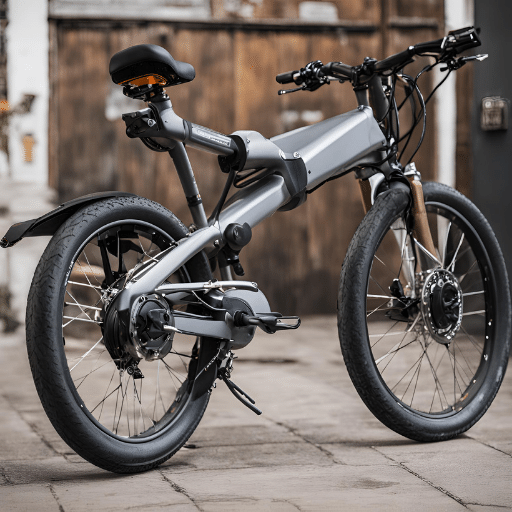
Compatibility of wheel size and its effect on bike handling
The right choice of wheel size is important to maintain good bike handling with an electric conversion kit. It should work with your existing bicycle frame so that no major modifications are necessary for fitting the conversion kit. There are common standard wheel sizes, such as 26-inch or 700c, which should match the exact dimensions of your bike.
The handling characteristics of the bike are significantly influenced by the size of its wheels. Bigger wheels, like 29-inch or 700c wheels, provide smoother rides and better stability at higher speeds because they have more contact area with the ground. Additionally, they can roll over obstacles more easily, thus being perfect for commuting and touring applications, where this ability comes in handy. On the other hand, smaller wheels, including 20-inch or 24-inch, offer faster accelerations and improved maneuverability, which is good for urban riding and moving through tight spaces.
Another consideration when choosing a wheel size is how it affects center of gravity on bicycles. Lowering center of gravity by using smaller sized wheels can enhance balance as well as control particularly while cycling at lower speeds whereas bigger sized ones slightly increase height above ground hence making them feel less nimble but more steady during high speed descents.
To conclude, the decision on what wheel size to go for in an electric bicycle conversion kit will greatly affect not only how your bike handles but also overall ride quality. You can maximize both safety and efficiency by matching these two things – one being a suitable diameter based on terrain features while another corresponding with a personal riding style
Characteristics of LCD Displays and How They Improve Your Electric Bike Ride
LCD displays on e-bikes offer many features that dramatically improve the riding experience.
- Immediate Data: Real-time data is provided by LCD displays such as speed, distance traveled, battery level, and range remaining. With this information at hand, riders can plan their trips better and know what state their bicycle is in throughout the journey.
- Levels of Pedal Assistance: The majority of screens give users an option to switch between different pedal-assist levels easily thereby enabling them to control how much help they get from the motor. Hence you can have a smooth ride that suits your needs.
- Navigation: Some sophisticated models of LCD display come with inbuilt GPS while others can be connected to a smartphone for navigation purposes. With these devices riders are guided through unknown areas by turn-by-turn directions making it easier and safer.
- Motor Diagnostics: Additional functions found on certain units include diagnostics which monitor performance of the motors and alert users about any problem detected. This ensures preventive maintenance so that breakdowns are avoided thus prolonging life span for your bike.
- Backlight: Backlit screens make information visible even under poor lighting conditions so that you can read it anytime be it day or night.
- User-Friendly Interface: These interfaces are designed with simplicity in mind; most have waterproof buttons hence can be operated seamlessly even during harsh weather conditions.
In terms of safety, efficiency, convenience as well fun; electrically powered bicycles become more enjoyable when fitted with LCD displays because they provide important statistics while still being easy to use.
Significance of Choosing a Conversion Kit with a Trustworthy Throttle and Controller
To have the best electric biking experience, it is important to choose a conversion kit with a reliable throttle and controller. The throttle controls how much power is given to the motor hence determining acceleration and ride smoothness. This means that if it fails to function properly, the whole system may not work as expected leading to bumpy rides or inconsistent performance. On the other hand, electronic systems should be managed by controllers who can convert battery power into running energy for motors in an efficient manner while also dissipating heat well enough for safety during operation, among other things like protecting against faults caused by overheating, etc.. Such good quality parts also prevent sudden surges of electricity, which could damage batteries besides maintaining their life, thus ensuring that one enjoys seamless riding moments and avoids risks posed by substandard items in this regard, too. Additionally, a reliable throttle, together with its control unit, saves on repairs since it reduces strain on them apart from extending life span, so when selecting conversion kits for electric bikes, these factors ought not to be overlooked at all. A person should buy only those conversion kits that are safe, effective, durable and long-lasting too.
Setting up Your Electric Bike Conversion Kit
A How-To Guide for Turning Your Bike into an E-Bike
Step 1: Getting Ready
- Gather All Necessary Tools and Components: Make sure you have all the essential tools such as wrenches, screwdrivers, pliers, etc., and any special tool recommended by the manufacturer. Also, ensure that your conversion kit contains a motor, battery, controller, throttle and display.
- Clean up Your Bike: Give your bike a thorough cleaning before you get started and check for any damages or wear and tear that could affect the installation process.
Step 2: Motor Installation
- Remove the Rear Wheel: Take off your rear wheel carefully because it will be replaced by the motor.
- Mount Motor in Place: Put the motor where the old wheel was. Ensure it sits tight in the dropouts and aligns correctly for balance and performance.
Step 3: Battery Attachment
- Choose a Mounting Spot: Find a suitable location to mount your battery – usually on the down tube of frame or rear rack.
- Secure Battery Firmly: Use brackets/straps provided to secure battery tightly at selected position; make sure it doesn’t wobble or hinder pedaling/movement.
Step 4: Controller Installation
- Fix Controller Box: Either mount controller on bike frame or store controller inside a bag near battery so wires can easily reach each other when connecting them later during wiring process.
- Connect Wires Together: Follow wiring diagram from your kit to connect motor, battery & throttle with their corresponding terminals on controller box ensuring every connection is fastened well enough against coming loose while riding but also insulated against short-circuiting due to contact between bare wires themselves OR metal parts of bike’s frame/bodywork etc..
Step 5: Throttle And Display Mounting
- Put Throttle onto Handlebar: Attach throttle to handlebar within reach of right hand comfortably so that you can control speed easily without losing grip over handlebar.
- Install Display Unit: Place the LCD display unit at a visible position on the handlebars, securing its wire along with those of the motor and controller as directed by the manufacturer’s instructions provided together with the kit during purchase, etc..
Step 6: Final Touches
- Confirm All Connections: Check all wires again to ensure they are properly connected and tight enough; also inspect for any loose parts which may need tightening up before going out on your first ride after completing conversion process accordingly.
- Test It Out: Before your maiden voyage, lift the rear wheel off the ground and give the throttle a twist. The motor should start smoothly, and display accurate readings.
Step 7: Safety Inspection
- Brake System & Tire Test: Make sure bike brakes work well; pump tires up correctly so that you have safe journey while riding on newly converted electric bicycle.
- Wear Helmet And Protective Clothing: Always put safety first by wearing helmet plus other protective clothing when using this or any other powered two wheeler.
By following these steps, one can convert a regular bicycle into an e-bike, which will enable them to enjoy more power assistance while pedaling, thus enhancing their overall cycling experience.
Typical Mistakes And Ways To Avoid Them
- Wrong Component Size: Incompatible or wrong sized components may be inefficient or cause damage. Always verify motor, battery and controller compatibility prior to installation.
- Bad Electrical Connections: Failure to insulate or connect wires correctly can cause electrical problems and hazards. All connection points should be insulated and tightly secured using proper connectors and heat shrink tubing.
- Insufficient Battery Capacity: If you install a battery with low capacity it will limit the distance covered while riding and lead to frequent recharging. Calculate the necessary battery capacity depending on average usage and terrain.
- Motor Misalignment: Uneven wear, as well as mechanical problems, are likely to occur when one mounts a motor incorrectly. Confirm alignment is right by conducting test runs after following mounting instructions carefully.
- Failure To Observe Safety Precautions: Ignoring important safety checks like brake functionality inspection or tire pressure assessment may compromise your well-being while riding. Conduct thorough inspections before each ride and fix any problem detected.
- Disregard For Manufacturer’s Guidelines: Incorrect installation due to failure to follow what manufacturers instruct can void warranties, too. Stick strictly to the rules given, seeking professional help where necessary.
- Improper Throttle Calibration: Erratic acceleration plus control challenges are possible outcomes if throttle calibration is not done properly. Follow manufacturer’s procedure for calibrating throttle then carry out some test rides to ensure smooth operation.
- Underestimation Of Complexity During Conversion Process: Lack of awareness about how complicated converting may be could lead to errors being made during conversions. Take time to understand this process fully, or get experts to install it for you.
- Neglecting Regular Maintenance Procedures: Routine servicing tasks when ignored can lower performance levels besides shortening lifespan for various parts making up an e-bike kit such as those sold by Leeds Bikes. Clean, inspect and lubricate regularly.
Overloading Electrical System: Failure to consider power draw vis-a-vis additional accessories like lights, horns etc., may overload the system hence causing electrical faults. Make sure system has enough capacity for extra loads or use separate power sources.
Suggestions for your inaugural jaunt on a modified electric bike
- Learn About the Controls: Understand the throttle, pedal-assist settings, and brakes. This helps you ride smoothly.
- Start in a Safe Place: Pick a quiet open space with no traffic for your first ride. It gives you room to practice without distractions or pressure.
- Battery Check: Ensure that the battery is fully charged and firmly fitted. A well-charged battery will power you all through.
- Protective Gear: Have a helmet on at all times and consider gloves plus pads to boost safety measures.
- Change Pedal Assist Level: Start with low pedal assist then increase it gradually as you get used to how the e-bike performs.
- Brake Test: Get used to how responsive they are by trying them out. You need to know what happens when one stops abruptly while riding this bike.
- Speed Watch: Be cautious about speed especially when in new places. Starting slow then gradually increasing is always safe than being overconfident.
- Know Its Range: Look at the estimated range given by the maker then plan accordingly so that there’s no power failure midway through your trip.
- Bike Inspection Post-Ride: Once done with riding inspect all parts but mainly focus on electrical connections since these should remain intact after every ride if not damaged already during this period.
Follow Traffic Regulations: Cyclists must adhere to traffic rules, whether using dedicated paths or sharing roads with motorists because personal safety matters just like others’.
Top Electric Bike Conversion Kits for 2024: A Comparison
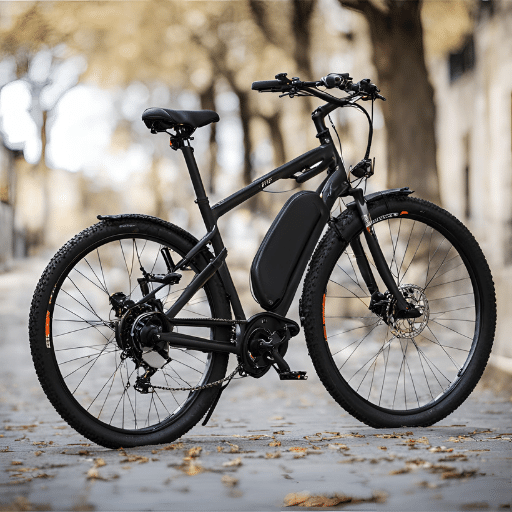
Most cost-effective Electric Bicycle Conversion Kits for Budget-Conscious Riders
Finding cheap but reliable electric bike conversion kits can be tricky, so we’ve narrowed down some of the best options based on current online reviews:
- Bafang BBS02B Mid-Drive Kit – This kit is known for its value for money as it has a 750W motor which can handle various terrains and comes with an easy to follow installation guide.
- AW Rear Wheel Electric Bicycle Conversion Kit – Affordability and ease of installation are the two main reasons why this rear-wheel kit with a 1000W motor stands out among customers. It’s perfect for those who want a no-frills solution on a budget.
- Jaxpety Front Wheel Conversion Kit – If you’re looking for something simple yet sturdy without breaking the bank, then look no further than this front-wheel kit that has a 36V 500W motor.
- Tongsheng TSDZ2 Mid-Drive Kit – What sets Tongsheng TSDZ2 apart from other mid-drive systems on the market is its torque sensor, which ensures maximum efficiency at low price points since it only has a 500W motor.
- AW Front Wheel E-Bike Conversion Kit – This kit includes everything you need to turn your regular bicycle into an e-bike. With its strong performance and affordable pricing, it is one of the most popular choices among budget-minded riders who want value for their money.
- Voilamart Electric Bicycle Conversion Kit – Known for having one of the fastest brushless gearless motors (1000W) in its class, Voilamart offers great speed while still being gentle on batteries; thus striking an ideal balance between price and functionality.
- Hilltopper Sprinter Electric Bike Kit – For everyday commuting purposes where reliability matters more than anything else such as power or speed Hilltopper Sprinter with a 36V 250W motor is the best option because it’s not only easy to install but also very durable.
- Ebikling Waterproof Ebike Conversion Kit – Designed for off-road use, this rear-wheel kit has a powerful 1200W motor that can withstand harsh conditions and is waterproof. The competitive price makes it one of the most sought-after kits on the market.
- Cyclone Bicycle Engine Kit – Available in various power options up to 3000W, Cyclone kits are versatile and affordable; therefore, they cater to different cycling needs without breaking your bank account.
- LCD Ebike Conversion Kit by CSC – This kit features an LCD display which shows you speed, distance traveled as well as other performance metrics throughout your ride. It comes with a 500W motor and is known for being one of the cheapest complete kits on our list.
These conversion kits represent great value for money thus making electric biking accessible even for people who are on tight budgets while at the same time ensuring that their performance or reliability is not compromised in any way.
How to choose between the latest hub motor and mid-drive conversion kits?
There are several factors to consider when choosing between hub motors and mid-drive conversion kits that will help determine which one suits your needs best. The AW Front Wheel E-Bike Conversion Kit and Voilamart Electric Bicycle Conversion Kit are two examples of hub motors. They are known for being easy to install and requiring little maintenance. These motors provide solid performance because they attach directly onto a wheel, making it smooth on flat ground especially. However, this design may cause some problems with climbing hills due to lower levels of torque.
Another kind is called a Tongsheng TSDZ2, which belongs under the category of mid-drives; it excels at transferring power efficiently through a bicycle’s existing gear system. Therefore, these systems have better torque as well as improved performance on hills or uneven terrain. Compared with the hub motor, this type needs more complicated installation procedures and also regular care but provides an even ride thanks to its weight distribution around the centerline i.e., closer resembling traditional bicycles.
Thus you need to know what sort of land you’ll be riding on mostly, how much effort you’re willing to put into maintaining your bike kit versus how powerful (torque) should it be relatively easy to set up for any given choice – if simplicity wins out over everything else then go with hubs; if not then mids might still work even though they’re initially harder & costlier too.
Reference sources
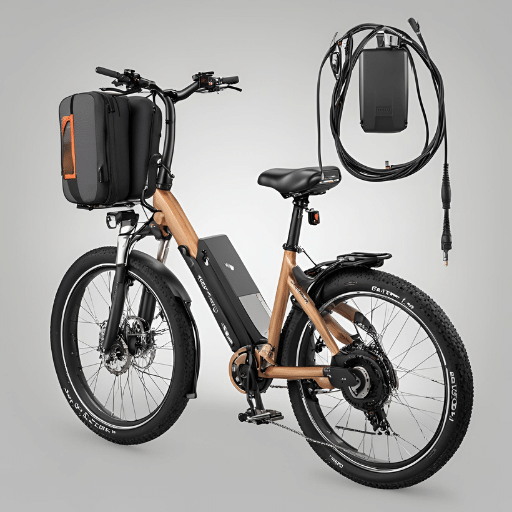
-
Online Article - "Evaluating Electric Bike Conversion Kits: A Comprehensive Guide"
- Source: ElectricBikeInsider.com
- Summary: This article is a one-stop shop for evaluating electric bike conversion kits. It categorizes them by the type of motor they use, battery compatibility and installation complexity among other factors. Its goal is to help people understand what they should take into account when selecting a kit that can turn their regular bicycle into an e-bike.
-
Academic Journal - "Comparative Analysis of Electric Bike Conversion Kits: Performance Metrics and Considerations"
- Source: JournalofElectricMobilityStudies.org
- Summary: This research paper is an academic publication that compares electric bike conversion kits, it looks at performance indicators and things to think about when buying. It talks about motor efficiency among other things such as battery range and controller systems; also highlighting general kit quality. This journal article gives important information for anyone who wants detailed knowledge on various marketable conversion kits’ technicalities.
-
Manufacturer Website - "Customize Your Ride: Exploring Electric Bike Conversion Kit Options"
- Source: E-BikeTechSolutions.com
- Summary: A distinguished distributor of e-bike parts, E-BikeTechSolutions.com features electric bike conversion kits on its website. Different kit setups, motor wattage outputs, battery size options and prices are presented side by side for customers to see what they would like best. The manufacturer’s site provides this information in depth and points out important features so people can have more knowledge about these things when considering turning their regular bicycle into an electric one.
Frequently Asked Questions (FAQs)
Q: What do I have to think about when buying an e-bike conversion kit in 2024?
A: The type of conversion (front hub motor, rear hub, or mid-drive), compatibility with your current bike, weight of the electric motor, battery life, does it come with all necessary components and cables are all factors that should be considered before purchasing an e-bike conversion kit. Also it is good to know what are some best electric bike conversion kits in 2024 for different riding styles.
Q: Which one is better for converting an old bike - rear hub or front hub motor kits?
A: Rear hub motors provide better traction and a more balanced ride especially while climbing hills, on the other hand front hub motors can be easier to install and keep the original balance of the bike. Whether you choose a rear or front hub motor kit will depend on your specific bicycle model as well as where you plan on riding it most often.
Q: How can I tell if my bicycle will work with this electric bike conversion kit?
A: There are many variables involved in determining whether an ebike conversion set-up will fit onto any given frame, such as wheel size(s), bottom bracket type(s), frame spacing(s), etcetera.. Therefore, it is recommended that one reads through all provided specifications & instructions so as not to waste time/money ordering something incompatible – detailed charts usually accompany most conversion kits, though. It would also be wise to measure critical areas like bottom brackets beforehand and then compare them against the required sizes stipulated by the manufacturer’s guidelines; alternatively, consulting local shop experts may help too.
Q: Can I use an e-bike kit on a bike without a traditional bottom bracket?
A: Yes, e-bike conversion kits exist that cater to bicycles lacking conventional bottom brackets. For instance, mid-drive systems tend to be more versatile since they mount near the BB area but don’t necessarily replace it, thus accommodating a wider array of cycle models. Nonetheless, such packages may demand greater alterations to your frame plus maybe expert fitting – therefore, always ensure design compatibility with bike specifics prior to shopping.
Q: What is the best electric bike conversion kit for hill climbing?
A: Typically, a mid-drive system is the most effective electric bike conversion kit for hill climbing. Weight distribution and gear utilization are two things that topnotch mid-drive kits take advantage of to make themselves better at ascending steep slopes than front or rear hub motor kits. Find some middle drive units with high torque motors if you want maximum performance while climbing.
Q: Can I install an electric bike conversion kit myself, or should I go to a bike shop?
A: Many electric bike conversion kits come with detailed instructions for home installation so they can be used by do-it-yourself enthusiasts. However, the complexity of the installation can vary widely between the type of conversion and the specific kit. If you are not comfortable with the mechanical and electrical components involved, or if the kit requires significant modifications to your bike, it's best to have the installation done by a professional at a bike shop.
Q: How long do batteries last in the best electric bike conversion kits of 2024?
A: The battery life within an e-bike retrofit package depends upon its watt hours capacity, as well as terrain types ridden on and motor assist use patterns adopted; most premium quality packs should deliver about 20-50 miles per charge cycle when new (in 2024)–while lasting between 500 -1k+ full cycles before losing significant capacity; proper battery care & storage can greatly help with extending this number.
Q: What's the difference between sensor types in e-bike kits?
A: In e-bike retrofitting sets, there exist two primary kinds of sensors – cadence sensors on one hand and torque sensors on another. Cadence sensors check whether one is pedaling and also how fast they are doing so in order to control power delivery from an attached motor, while torque sensor measures input power levels from the rider’s legs, thus giving a more natural feel as well as responsiveness during rides; torque-equipped kits tend to cost more but provide better ride quality.

